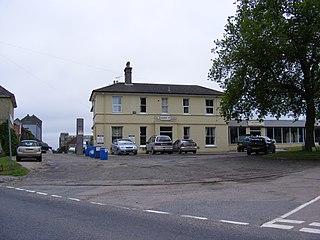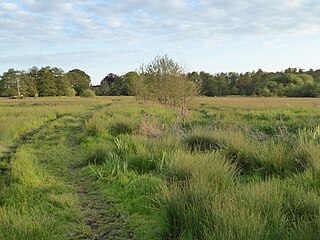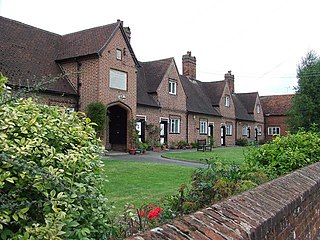| Framlingham Mere | |
|---|---|
 | |
| Type | Nature reserve |
| Location | Framlingham, Suffolk |
| Area | 13.8 hectares |
| Managed by | Suffolk Wildlife Trust |
Framlingham Mere is a 13.8 hectare nature reserve in Framlingham in Suffolk. It is managed by the Suffolk Wildlife Trust. [1]

Framlingham is a market town and civil parish in Suffolk, England. Of Anglo-Saxon origin, it is mentioned in the Domesday Book. It had a population of 3,342 at the 2011 Census. Nearby villages include Earl Soham, Kettleburgh, Parham, Saxtead and Sweffling.

Suffolk is an East Anglian county of historic origin in England. It has borders with Norfolk to the north, Cambridgeshire to the west and Essex to the south. The North Sea lies to the east. The county town is Ipswich; other important towns include Lowestoft, Bury St Edmunds, Newmarket and Felixstowe, one of the largest container ports in Europe.

Suffolk Wildlife Trust (SWT) describes itself as the county's "nature charity – the only organisation dedicated wholly to safeguarding Suffolk's wildlife and countryside." It is a registered charity, and its headquarters is at Brooke House in Ashbocking, near Ipswich. It was founded in 1961, and is one of 47 wildlife trusts covering the Great Britain and Northern Ireland. As of March 2017, it has 13,200 members, and it manages 3,120 hectares of land in 60 nature reserves, most of which are open to the public. It had an income of £3.9 million in the year to 31 March 2017.
This site has a lake and wet meadows adjoining Framlingham Castle. There are many migrating birds, and flora include marsh marigolds, ragged-robin and lady's smock. [1]

Framlingham Castle is a castle in the market town of Framlingham in Suffolk in England. An early motte and bailey or ringwork Norman castle was built on the Framlingham site by 1148, but this was destroyed by Henry II of England in the aftermath of the revolt of 1173–4. Its replacement, constructed by Roger Bigod, the Earl of Norfolk, was unusual for the time in having no central keep, but instead using a curtain wall with thirteen mural towers to defend the centre of the castle. Despite this, the castle was successfully taken by King John in 1216 after a short siege. By the end of the 13th century, Framlingham had become a luxurious home, surrounded by extensive parkland used for hunting.
There is access from New Road and by a footpath past the castle from Badingham Road.
| Wikimedia Commons has media related to Framlingham Mere . |
















